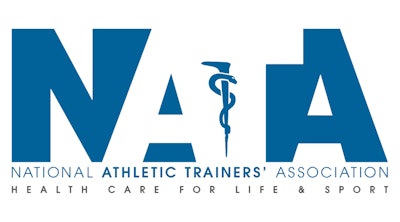
A new study, “Health Care Navigation of Black and White Adolescents After Sport-Related Concussion: A Path Towards Achieving Health Equity,” which appeared in the April issue of the Journal of Athletic Training, the National Athletic Trainers’ Association (NATA) scientific journal, aims to better understand whether race is a factor sports-related concussion care.
“Ensuring equal access of care for sports-related injuries and illnesses is certainly an integral part of our best practices, said NATA President, Kathy Dieringer, EdD, LAT, ATC. “This study provides a clear roadmap to equitable care and demonstrates that a multi-disciplinary network including athletic trainers (ATs) and Emergency Department (ED) physicians can expedite care and recovery.”
“Our objective was to determine whether racial differences exist in the care pathway from injury to the sport-related concussion (SRC) clinic within adolescent athletes, according to lead author Aaron Yengo-Kahn, MD, Vanderbilt University School of Medicine.
“Sport-related concussions are a public health concern, particularly among pediatric and adolescent populations, where one in five athletes has reported sustaining a concussion in their lifetime. Diversity among these athletes matters, seeking care for sport-related concussions are not consistent across demographics, can stem from health inequities, and can lead to further disparities,” he added.
The researchers note that previous literature across medical fields and diagnoses indicates that even after accounting for factors such as insurance, severity of disease, income status, and educational levels, Black patients suffered worse outcomes and receive lesser-quality care compared with their White counterparts.1 Based on prior studies suggesting the existence of racial differences pertaining to SRC, they hypothesized that differences would exist in initial management and access to care but were pleased by what they found.
Key Points
- Being within the sport-related concussion clinic referral network at the time of injury appears to mitigate the effect of socioeconomic differences, promote health equity and optimize continuity of care between Black and White athletes.
- Nearly two-thirds of Black and White athletes sought sport-related concussion care initially at the concussion clinic compared with the emergency department or other medical clinic.
- The presence of an athletic trainer is integral to the care pathway and may help to reduce disparities: 40% and 30% of Black and White athletes, respectively, were released to the athletic trainer to carry out return-to-play protocols as a final sequence of care.
Study Design & OutcomesA total of 582 middle and high school athletes (486 [83%] White and 96 [17%] Black) participated in the retrospective cohort study, were diagnosed with SRC and evaluated within 3 months at an SRC clinic between November 1, 2017 and October 1, 2020. The research was completed using data from the Vanderbilt Sports Concussion Center (VSCC) registry, a joint venture between the Vanderbilt University Sports Medicine (VUSM) and Vanderbilt University Medical Center (VUMC) Neurosurgery and Orthopedics Departments.
VUSM provides athletic training outreach services to 26 high schools in the Nashville, Tennessee area. The VSCC providers also have established relationships with ATs at high schools outside of VUSM relationships. Referrals flow into the VSCC from the ED, ATs and community providers.
The four primary outcomes were (1) location of the first health system contact, (2) time from injury to the first health system contact, (3) time to the in-person SRC clinic visit, and (4) whether the athlete established care (attended >1 visit), was released immediately to an AT or was lost to follow-up.Additional findings include:
- Black athletes more frequently reported loss of consciousness than White athletes, whereas amnesia was similarly reported by both groups.
- Black and White athletes demonstrated no significant difference in the prevalence of on-field evaluation post-injury or the time to the first health system contact.
- The initial system contact setting was not different by race.
Conclusions“We demonstrated that within an established SRC referral network and multidisciplinary clinic, there were no observed racial disparities in how athletes were initially managed or ultimately presented to the SRC clinic, despite racial differences in school type and insurance coverage,” added study author Jessica Wallace, PhD, MPH, LAT, ATC, Athletic Training Program, Department of Health Science, The University of Alabama, Tuscaloosa. “The AT remains a cornerstone of that care and can be a resource to help athletes and families navigate medical spaces, though previous researchers have demonstrated disparities in access to ATs.”
“SRC center assimilation and affiliation with school systems may be helpful in improving access and providing equitable care across diverse patient demographics. Results from this study provide a health-equity–focused example of a health care network model that can reduce disparities and facilitate the continuity of care for patients with SRC.”
April is National Minority Health Month with the theme Give Your Community a Boost!




































